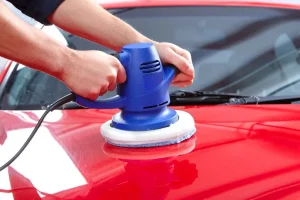In today’s fast-paced world, self-sufficiency is a valuable skill. Knowing how to replace your car battery not only saves money but also ensures you’re not stranded with a dead battery. This guide is for vehicle owners, DIY mechanics, and car enthusiasts who want to gain confidence in their car maintenance abilities.
Why Knowing How to Replace Your Car Battery Matters
A car battery might be small, but it’s the heart of your vehicle’s electrical system. Without it, your car won’t start, your electronics won’t work, and you could find yourself stuck in inconvenient situations. Learning how to replace your car battery empowers you to take control of routine maintenance, saving you both time and money.
Additionally, handling this task yourself can be immensely satisfying. It’s a straightforward process that doesn’t require advanced mechanical skills, making it an accessible project for most car owners. Plus, understanding how your vehicle works enhances your overall driving experience.
In this post, we’ll walk you through the entire process of replacing your car battery—from identifying when it’s time for a new one to ensuring your replacement is installed correctly. By the end, you’ll feel confident enough to tackle this task on your own.
Recognizing the Signs of a Failing Battery
Identifying a failing battery before it completely dies can save you from unexpected breakdowns. One of the most common signs is a slow engine crank. If your engine takes longer than usual to start, it might be time to check your battery. Dim headlights and electronic accessories that don’t function properly can also indicate a weakening battery.
Frequent jump starts are another red flag. If you find yourself needing to jump-start your car more often than usual, it’s a clear sign that your battery is not holding a charge. Additionally, if your battery is more than three years old, it’s wise to get it tested regularly, as its efficiency diminishes over time.
Corrosion on the battery terminals is another symptom. This can often be seen as a white, ashy substance on the metal parts of the battery. While minor corrosion can be cleaned, persistent build-up often indicates that the battery is nearing the end of its life.
Preparing for the Replacement
Before you begin, gather all necessary tools. You’ll need a wrench or socket set, protective gloves, safety glasses, and a brush for cleaning corrosion. It’s essential to choose the right replacement battery—check your vehicle’s owner manual for specifications.
Safety is paramount when dealing with car batteries. Always work in a well-ventilated area to avoid inhaling harmful fumes. Wear protective gloves and safety glasses to protect yourself from acid spills and corrosive materials. Ensure the car is turned off, and keys are removed from the ignition to prevent accidental electrical discharges.
Disconnecting the battery requires careful attention. Start by removing the negative terminal first to prevent short circuits. After disconnecting the positive terminal, you can safely remove the old battery. Handle the battery with care, as it contains harmful chemicals.
Step-by-Step Guide to Replacing a Car Battery
- Disconnect the old battery:
- Start by removing the negative terminal using a wrench or socket set.
- Next, disconnect the positive terminal.
- Carefully lift the battery out of its tray, keeping it upright to avoid acid spills.
- Clean the terminals:
- Use a wire brush to clean any corrosion from the battery terminals and tray.
- Ensure the terminals are free of debris to guarantee a good connection.
- Install the new battery:
- Place the new battery in the tray, ensuring it sits firmly.
- Connect the positive terminal first, followed by the negative terminal.
- Tighten the clamps securely, but not too tight to avoid damaging the battery.
- Secure the battery:
- Ensure the battery is secured with the hold-down clamp.
- Check that the battery doesn’t move to ensure it’s properly installed.
